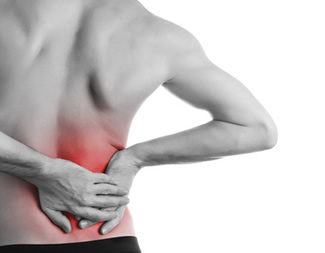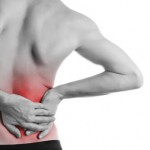
Herniated vs Bulging Disc
Disks are like rubbery cushions that are in between each vertebra in your spine. They are made up of an outside layer of tough cartilage that coats the softer cartilage in the center.
A bulging disk occurs when it extends outside the area it should normally occupy. The part of the disk that’s bulging is typically the tough outer layer of cartilage. For example, picture a hamburger patty that is too big for the bun.
On the other hand, a herniated disk refers to a problem with one of the rubbery cushions (disks) between the individual bones (vertebrae) that stack up to make your spine. A herniated disk is a result of a crack in the tough outer layer of the cartilage which allows some of the softer inner cartilage to protrude out of the disk. This is similar to squeezing a jelly-filled doughnut and the jelly pushes through a crack in the tougher outside layer.
Bulging disks are more common than herniated disks and usually cause no pain. Herniated disks are more likely to cause pain, but some may not have pain at all.
SYMPTOMS
The most common signs and symptoms of a herniated disk are:
• Arm or leg pain. If your herniated disk is in your lower back, you will notice the most intense pain occurs in your buttocks, thigh and calf. It may also radiate into part of the foot. If your herniated disk is in your neck, the pain will typically be most intense in the arm and shoulder.
• Numbness or tingling. People who have a herniated disk will often experience numbness or tingling into the body part involved with the affected nerves.
• Weakness. Muscles involved with the affected nerves tend to become weak. This may cause you to lose your balance, or impair your ability to hold or carry things.
CAUSES
Disk herniation is most often the result of a natural, aging-related wear and tear called disk degeneration. As you get older, a loss of some the water content of the spinal disks can occur. This weakens them and causes them to be less flexible and more prone to tears or ruptures with even a minor strain or twist.
Most people are not able to pinpoint the exact cause of their herniated disk. It is rarely caused from a traumatic event such as a fall. Herniated disks usually are a result from an improper posture during a certain movement such as, using your back muscles instead of your leg and thigh muscles to lift large, heavy objects. Also twisting and turning while lifting can lead to a herniated disk.
IMAGING TESTS
• X-rays. Plain X-rays do not detect herniated disks, but are helpful to rule out other causes of back pain, such as an infection, tumor, spinal alignment problems or a broken bone.
• Computerized tomography (CT scan). A CT scanner takes a series of X-rays from many different angles to create cross-sectional images of your spinal column and the structures around it.
• Magnetic resonance imaging (MRI). Images of your body’s internal structures are captured by radio waves and a strong magnetic field. This test can be used to confirm the location of the herniated disk and to see which nerves are affected.
NERVE TESTS
Electromyograms and nerve conduction studies detect how well electrical signals are moving along nerve tissue. This can help determine if there is any nerve damage and pinpoint the exact location of the nerve damage.
TREATMENTS AND DRUGS
Research your options before agreeing to undergo surgery. Having a lot of back pain does not necessarily mean that you need surgery.
Conservative treatment works for most people. 9 out of 10 people with a herniated disk can relieve their symptoms by avoiding painful positions along with a balance of healthy diet, exercise and use of pain-medication.
MEDICATIONS
• Over-the-counter pain medications. For mild to moderate pain, your doctor may advise you to take an over-the-counter pain medication, such as ibuprofen (Advil, Motrin) or naproxen (Aleve).
• Narcotics. For more severe pain, your doctor may prescribe narcotics, such as codeine or an oxycodone, Oxycontin, or Percocet, for a short time. However, there may be some side effects to these drugs such as sedation, nausea, confusion and constipation.
• Nerve pain medications. There are other drugs such as Lyrica, Cymbalta, and Tramadol, that often may help to relieve nerve-damage pain.
• Muscle relaxers. Muscle relaxants may also be prescribed if you have muscle spasms. Sedation and dizziness are common side effects that may occur due to use of these medications.
• Cortisone injections. Inflammation-suppressing corticosteroids may be given by injection directly into the location around the spinal nerves.
PHYSICAL THERAPY
Physical therapists can educate you on proper positions and exercises designed to minimize the pain of a herniated disk. A physical therapist may also recommend:
• Heat or ice
• Traction
• Ultrasound
• Electrical stimulation
• Short-term bracing for support the neck or lower back
SURGERY
Back surgery can help relieve some causes of back pain, but it’s usually not necessary. Most back pain resolves on its own within two months.
Low back pain is one of the most common ailments seen by family doctors. Back problems typically respond to nonsurgical treatments — such as anti-inflammatory medications, heat, gentle massage and physical therapy.
A very few number of people with herniated disks need surgery. Your doctor may suggest surgery if conservative treatments fail to improve your symptoms after a period of time.
PREVENTION
There are things you can do to help prevent a herniated disk:
• Exercise. Strengthening the trunk and core muscles helps stabilize and support the spine.
• Maintain good posture. Good posture reduces the pressure on your spine and disks. Keep your back straight particularly when sitting for long periods. Use proper body mechanics when Lifting heavy objects, using your legs to do most of the work — not your back.
• Maintain a healthy weight. Excess weight puts more pressure on the spine and disks, putting them at more risks to injury.
Citation
http://www.mayoclinic.org
Answers from Randy A. Shelerud, M.D.

